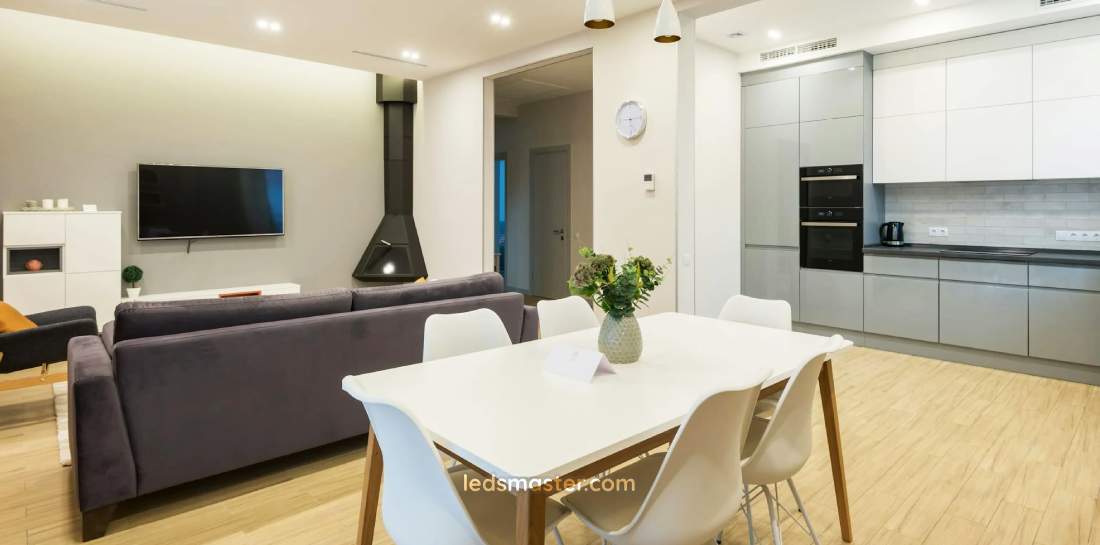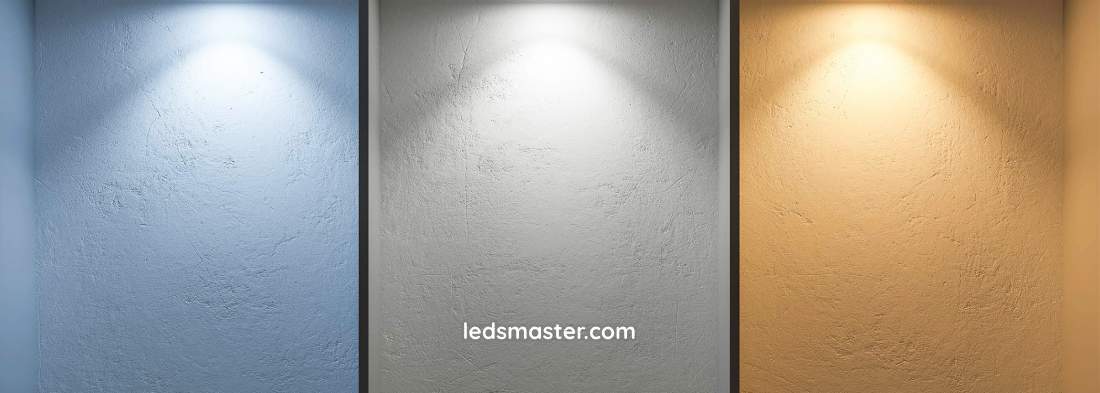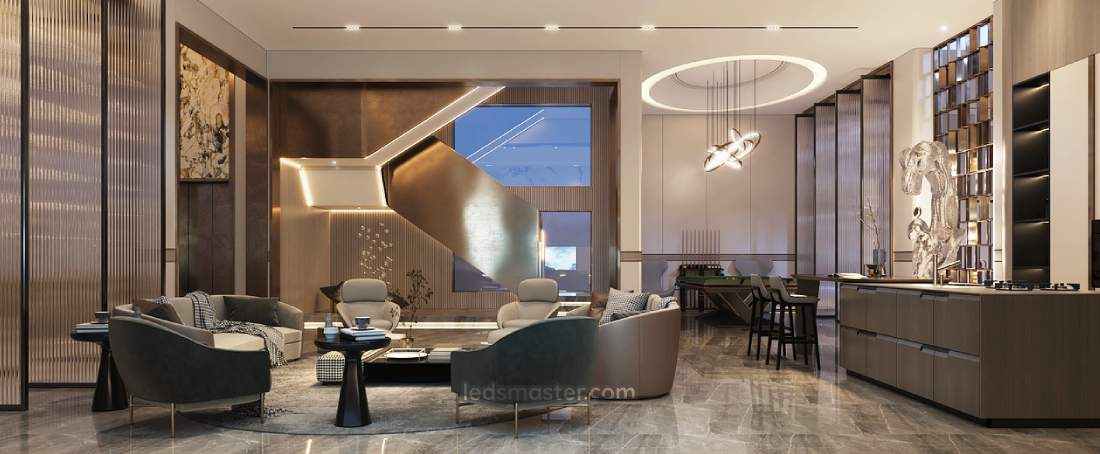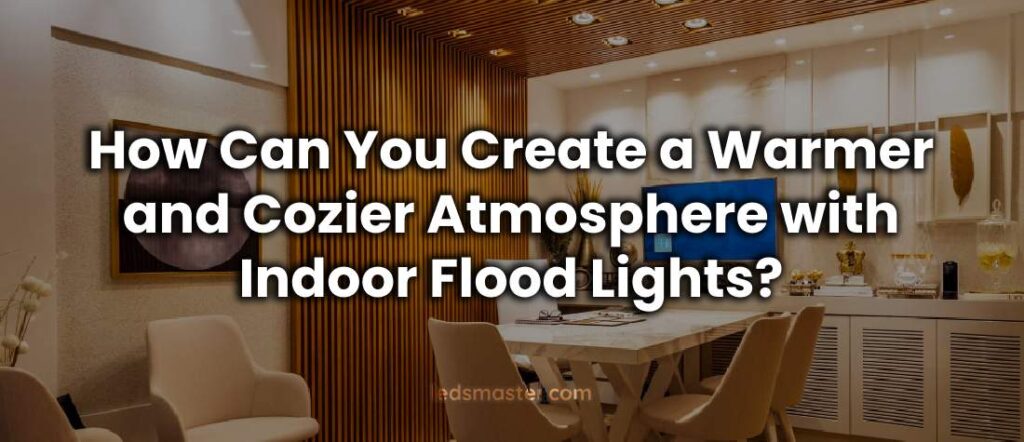Transforming your indoor space into a haven of warmth and comfort is a rewarding endeavor, and indoor flood lights can be your secret ally in this quest. Often associated with bright, functional illumination, these versatile lights can be adjusted and styled to create a soft, inviting ambiance. Imagine curling up with a good book or sharing a cozy evening with loved ones, all bathed in the gentle glow of well-placed indoor flood lights. By understanding and harnessing their potential, you can craft an atmosphere that feels both welcoming and serene. Let’s explore how you can turn these powerful lights into instruments of warmth and coziness in your home.
Table of Contents
ToggleUnderstanding Indoor Flood Lights
Indoor flood lights are designed to provide broad and intense illumination, making them ideal for highlighting large areas or specific features. Unlike more focused lighting options, flood lights cast a wide beam, offering extensive coverage and ensuring that spaces are well-lit. They come in various forms, including LED, halogen, and incandescent, each with unique qualities that affect the type of light they produce. To create a truly cozy atmosphere, it’s crucial to understand these different types and how to manipulate their characteristics effectively to achieve a softer, more inviting ambiance.

The Basics of Flood Light Technology
At their core, flood lights are engineered to deliver high-intensity illumination over a broad area. This makes them particularly useful for a range of applications, from enhancing security around your home to highlighting architectural features or showcasing artwork. Their broad beam angle ensures that they can light up large spaces effectively, making them a go-to choice for both functional and aesthetic purposes.
However, the same features that make flood lights excellent for general illumination also mean they can be quite harsh if not properly managed. The brightness and intensity of these lights can be adjusted or diffused to achieve softer lighting effects that contribute to a warmer and more inviting atmosphere.
Flood lights generally come with a range of beam angles and intensities, which can be tailored to specific needs. For instance, a narrower beam angle might be ideal for highlighting a particular object or area, while a wider beam angle can ensure even lighting across a larger space. Understanding how to adjust these settings allows you to fine-tune the ambiance according to your preferences.
Additionally, the type of bulb used in your flood lights—whether LED, halogen, or incandescent—plays a significant role in the overall warmth of the light. LEDs are known for their energy efficiency and long lifespan, while halogens offer a bright, crisp light, and incandescent bulbs provide a warm, familiar glow. Each of these options has its advantages and drawbacks, and selecting the right type for your space is essential for achieving the desired cozy atmosphere.
Choosing the Right Color Temperature
Color temperature is a critical factor in defining the atmosphere of any space. Measured in Kelvins (K), it determines whether the light appears warm and inviting or cool and crisp. To cultivate a warmer and cozier ambiance, focusing on a lower color temperature is essential.
Warm White vs. Cool White

Warm white light, with a color temperature typically ranging from 2700K to 3000K, produces a soft and welcoming glow akin to traditional incandescent bulbs. This type of light enhances the warmth and comfort of a room, making it particularly well-suited for areas where relaxation is key, such as living rooms, bedrooms, and cozy nooks. The gentle, golden hue of warm white light fosters an inviting environment that encourages relaxation and comfort.
In contrast, cool white light, which falls on the higher end of the color temperature spectrum, can create a more clinical or energetic atmosphere. Ranging from around 4000K to 6000K, cool white light is often used in spaces that require bright, clear illumination, such as work areas or kitchens. While it offers excellent visibility and clarity, it does not contribute to the same level of coziness as warm white light.
LED Flood Lights for Warmth
LED flood lights have become increasingly popular due to their energy efficiency, longevity, and versatility. One of the notable advantages of LED technology is the ability to adjust color temperatures to meet various needs. Many LED flood lights come with adjustable settings, allowing you to select a warmer color temperature to enhance the coziness of your space.
When selecting LED flood lights, look for models that are specifically labeled as “warm white” or that feature a color temperature around 2700K. These options provide a soft, warm glow that is ideal for creating a relaxing atmosphere. Additionally, LED flood lights are available in dimmable versions, giving you further control over the light intensity and enabling you to tailor the ambiance to your preferences.
Utilizing Dimmer Switches
Dimmer switches are invaluable tools for creating a versatile and adaptable lighting environment. By allowing you to adjust the brightness of your indoor flood lights, dimmers enable you to fine-tune the ambiance to suit various moods and activities. This flexibility is key to crafting a softer, more inviting atmosphere.
Benefits of Dimming Capabilities
The ability to control light intensity with dimmer switches offers numerous advantages. One of the primary benefits is the capacity to tailor the lighting to different needs and occasions. For example, lowering the brightness can help create a calm and soothing environment during the evening, perfect for unwinding after a long day or enjoying a quiet moment. Conversely, increasing the brightness can be useful for more active settings, such as when entertaining guests or engaging in tasks that require focused lighting.
Dimmer switches also contribute to the overall functionality of your space. They provide the flexibility to adjust lighting levels depending on the time of day and the specific activities taking place. This adaptability enhances the comfort and usability of the space, ensuring that the lighting is always appropriate for the situation.
Choosing the Right Dimmer
Selecting the right dimmer switch is crucial for ensuring compatibility with your flood lights and achieving the desired lighting effects. Different types of bulbs, such as LED, incandescent, and halogen, have varying requirements when it comes to dimmer switches.
For LED flood lights, it is essential to choose a dimmer that is designed specifically for LED technology. Traditional dimmers may not work effectively with LED lights and can cause flickering or uneven dimming. LED-compatible dimmers are engineered to handle the unique characteristics of LED bulbs, providing smooth and reliable performance.
If you are using incandescent or halogen flood lights, you can opt for standard dimmer switches that are compatible with these types of bulbs. These dimmers are typically straightforward to install and offer reliable dimming control.
Consulting with a lighting professional can help you make an informed decision about the best dimmer switch for your setup. They can provide guidance on compatibility, installation, and the features that will best meet your needs. By selecting the appropriate dimmer switch, you ensure that your indoor flood lights can be effectively adjusted to create the perfect ambiance for any occasion.
Positioning and Placement
The placement of indoor flood lights plays a pivotal role in shaping the ambiance of a room. Strategic positioning can transform the lighting from merely functional to an integral part of a room’s overall design, helping to create a balanced and inviting atmosphere.

Overhead Lighting vs. Accent Lighting
Overhead flood lights are commonly used for general illumination, providing broad coverage across a space. However, when used without consideration for their intensity and distribution, they can sometimes produce a harsh and unwelcoming light. To mitigate this and achieve a warmer, cozier effect, it’s important to think creatively about how you position your flood lights.
Accent lighting, as opposed to general overhead illumination, focuses on highlighting specific features within a room. By directing flood lights to accentuate architectural details, artwork, or textured surfaces, you can create a more dynamic and engaging atmosphere. This approach not only softens the overall light but also adds depth and interest to the space. For instance, placing flood lights to wash light over a textured wall or behind a piece of art can create subtle highlights and shadows, contributing to a more visually appealing and comfortable environment.
Using Flood Lights in Layers
Layering your lighting involves integrating various types of lights to achieve a well-rounded and adaptable lighting scheme. Combining indoor flood lights with other light sources, such as table lamps, floor lamps, or wall sconces, can enhance the warmth and coziness of a room.
Flood lights can serve as a key element in this layered approach, providing focused illumination where needed. By pairing them with softer, ambient lighting sources, you create a more balanced lighting environment. For example, using flood lights to illuminate key areas while complementing them with lamps that offer a gentle, diffused light can help to achieve a harmonious blend of functionality and comfort. This combination ensures that the room is well-lit without overwhelming the space with intense brightness.
Layered lighting not only enhances the aesthetic appeal but also allows for greater flexibility. You can adjust the combination of lighting sources based on different activities or moods, whether you’re hosting a social gathering or enjoying a quiet evening at home.
Adding Light Diffusers and Shades
To transform the intense brightness of indoor flood lights into a soft, welcoming glow, incorporating light diffusers or shades is a highly effective strategy. These accessories help scatter light more evenly, reduce glare, and contribute to a more comfortable and inviting atmosphere.
Types of Light Diffusers
Light diffusers come in several forms, each offering unique benefits and aesthetic qualities. Frosted glass covers are a popular choice, providing a sleek appearance while softening the light. They help to diffuse the beam, reducing harsh shadows and creating a more even illumination across the room. Frosted glass can enhance the overall look of your lighting while maintaining a modern, clean aesthetic.
Fabric shades are another option, adding a layer of texture and warmth to your lighting setup. These shades come in various designs and materials, such as linen or cotton, which can introduce a cozy, homey feel. Fabric shades not only diffuse light but also contribute to the room’s decor, complementing the overall style and creating a softer ambiance.
Diffusing panels are a versatile choice, available in different shapes and sizes to fit various lighting fixtures. These panels help scatter light over a broader area, minimizing glare and creating a gentle, uniform glow. They are particularly useful in larger spaces where even light distribution is desired.
Installing Diffusers
Installing light diffusers is generally a straightforward process. Most diffusers can be attached using simple fittings or mounts designed for easy installation. When selecting a diffuser, ensure it is compatible with your flood lights and does not impede their functionality. Proper installation is crucial to achieving the desired effect—diffusers should be securely fitted and positioned to allow for optimal light dispersion.
It’s important to choose a diffuser that complements the type of flood lights you are using. For example, LED flood lights may require different types of diffusers compared to incandescent or halogen lights. Consult the manufacturer’s guidelines or seek advice from a lighting professional to ensure compatibility and effectiveness.
Incorporating Complementary Decor
While lighting is a key element in creating a cozy atmosphere, the surrounding decor also plays a significant role. By integrating decor elements that enhance the warmth and comfort of the space, you can further amplify the inviting ambiance created by your flood lights.
Soft Furnishings and Textures
Incorporate soft furnishings such as plush cushions, cozy throws, and textured rugs to add a tactile sense of comfort to the room. These elements, combined with warm lighting, create a more inviting and relaxing environment. Textures like velvet, wool, and cotton contribute to the room’s coziness, making it a comfortable space to unwind and enjoy.
Color Schemes and Materials
Choose color schemes and materials that complement the warm glow of your flood lights. Earthy tones, rich fabrics, and natural materials enhance the cozy atmosphere and create a harmonious balance with your lighting. Colors such as warm browns, deep reds, and soft neutrals can amplify the inviting effect of your flood lights, while materials like wood, stone, and woven textiles add depth and warmth to the space.
Conclusion
Creating a warmer and cozier atmosphere with indoor flood lights involves a thoughtful approach to lighting design and placement. By selecting the right color temperature, utilizing dimmer switches, positioning the lights strategically, and incorporating diffusers, you can transform the intensity of flood lights into a soft and inviting glow. Combining these lighting techniques with complementary decor will further enhance the comfort and warmth of your indoor space, making it a welcoming retreat for relaxation and enjoyment.

